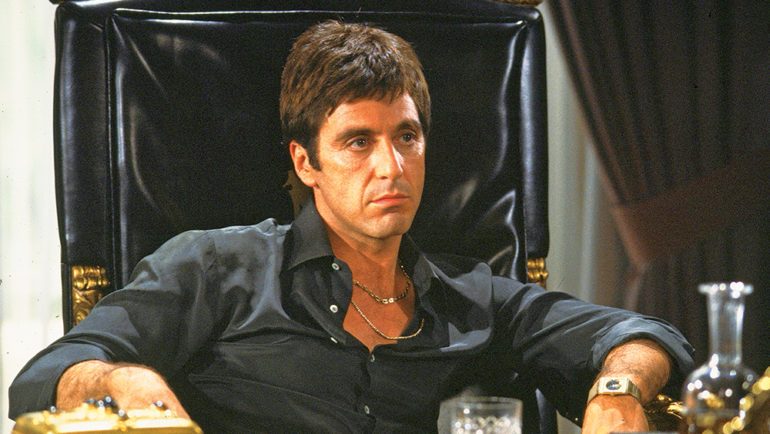Inside ‘Scarface’s’ Sometimes Rocky Road to Becoming a Classic
By Tim Gray
LOS ANGELES (Variety.com) – “Scarface,” which opened
Dec. 9, 1983
, made money at the box office but wasn’t immediately profitable. In the 35 years since then, the film has been embraced as a classic. On April 6, 1982, Variety announced star Al Pacino and director Sidney Lumet were working on a remake of the 1932 film, but before long Brian De Palma stepped in as director. The original budget was $13 million-$14 million. When production wrapped in summer 1983, the cost had ballooned to $37 million.
Just before its holiday launch, Universal held a New York premiere screening and a party at Sardi’s, with guests including Cher, Raquel Welch, Lucille Ball, Eddie Murphy and Kurt Vonnegut, “who walked out during the grisly chainsaw shower scene,” Variety reported. The story added that an on-screen dedication at the end to Ben Hecht and Howard Hawks of the 1932 original “elicited a few angry boos from the mainly trade audience.”
The project started as a 1929 pulp novel by Armitage Trail, inspired by gangster Al Capone, whose nickname was . The book and the 1932 film center on prohibition in Chicago. The 1983 version switched to the Florida drug trade.
Before that version began, the filmmakers announced it would be timely, pegged to a 1980 boat-lift from Mariel Harbor in Cuba, where thousands had emigrated to the U.S. There were claims that a number of them were inmates from prison or mental institutions. During production of “Scarface,” the film earned lots of advance publicity as Cuban-Americans protested the depiction.
Fueling more publicity: In early screenings, there were rumors that the film was facing an X rating, but the Variety review shrugged, “Pic is bloody but no more brutal than many other films in recent years, although odds are that it contains more four-letter words than any picture to date.”
The remake did OK at the box office, earning $66 million worldwide, but that was not enough to offset the big budget. Still, the picture gained followers in home video and beyond. In 1984, home vid execs said it was summer’s highest selling title — at $79.95 a pop. There were 100,000 videocassettes sold as of June 22, 1984, bringing in an estimated $5 million.
And the movie continued to add viewers in cable and streaming. People liked the over-the-top violence, intense acting and the intentionally vulgar nouveau-riche look from art director Ed Richardson, visual consultant Ferdinando Scarfiotti and costume designer Patricia Norris.
For the record, the original ran 93 minutes; the remake was 170 minutes. And Pacino’s line “Say hello to my little friend” has entered pop culture.
There has been talk of a further remake, with Antoine Fuqua the Coen brothers, Terence Winter and Diego Luna involved at various points. But so far, a new version has missed its 2018 target date.

